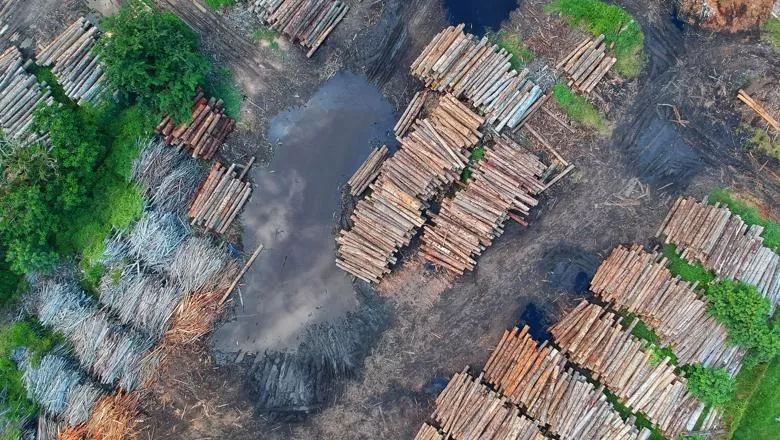We found that the policy of blacklisting municipalities reduced the impact of commodity prices on deforestation by about 40 per cent. In our sample, the total saved forest due to this effect was about 9,000 km2
Research team
11 June 2021
Researchers identify key tool in fight to reduce deforestation
Prioritising closer monitoring and law enforcement efforts – a policy known as blacklisting - could be key to reducing deforestation in the Amazon rainforest, a new study has suggested.

Blacklisting, in which municipalities in Brazil with high rates of deforestation are put under closer monitoring by government and law enforcement, proved more effective in reducing pressure on the rainforest in response to rising commodity prices than other high-profile policy initiatives, such as conservation zones.
The study found that blacklisting reduced deforestation related to increasing agriculture commodity prices by 40 per cent.
The findings were revealed in a new study, Commodity prices and robust environmental regulation: Evidence from deforestation in Brazil, published in the Journal of Environmental Economics and Management.
The study was co-authored by Dr Karlygash Kuralbayeva, of King’s College London, Dr Julika Herzberg, of Aachen University, and Dr Torfinn Harding, of the University of Stavanger.
The data gathered by the researchers covered 470 Brazilian municipalities over an 11-year period, from 2002-2013.
The study found that deforestation increased due to higher agricultural commodity prices, which again are held to be driven by demand for crops such as corn and soy from China, Europe and North America.
The researchers estimated that the deforestation caused by rising crop prices corresponded to a total of about 17,000 km2 of deforestation across the 470 studied municipalities over 10 years.
In the study period, the Lula government implemented a set of policies to curb deforestation and the study set out to measure what policies, if any, were effective in offsetting the pressure on the forest created by the higher commodity prices.
The ‘soy moratorium’ policy, introduced in 2006 and banning the purchase of soybeans planted on farmlands cleared after June 2006, did not reduce the impact on deforestation of commodity prices in general. A possible reason is that the land may be used to grow other crops, such as corn, which had also increased in price.
The researchers noted: “The soy moratorium increases the costs of producing soy on newly deforested lands and thus increases the relative attractiveness of alternative uses of deforested lands, which can lead to substitution from soy to other crops.”
Similarly, a network of ‘conservation zones’, created by officials in Brazil to take away forested land from the potential land supply, was found to increase the deforestation pressure on the remaining unprotected areas.
The blacklisting policy, meanwhile, was launched in 2008 and saw a list of 36 municipalities subjected to more stringent checks and observation by officials. Later on, more municipalities were added to the list. During 2011-2013, a group of 11 municipalities were allowed to leave the list due to a “remarkable decline” in deforestation.
The researchers said: “Our results suggest that protection of specific areas (conservation zones) and targeting of a specific crop (soy moratorium) are vulnerable to leakage within municipalities. Prioritising entire municipalities in monitoring and law enforcement efforts (blacklisting) is, in contrast, effective in reducing deforestation related to international agricultural commodity prices.”
The team added: “We found that the policy of blacklisting municipalities reduced the impact of commodity prices on deforestation by about 40 per cent. In our sample, the total saved forest due to this effect was about 9,000 km2.”
You can read the paper in full here.

